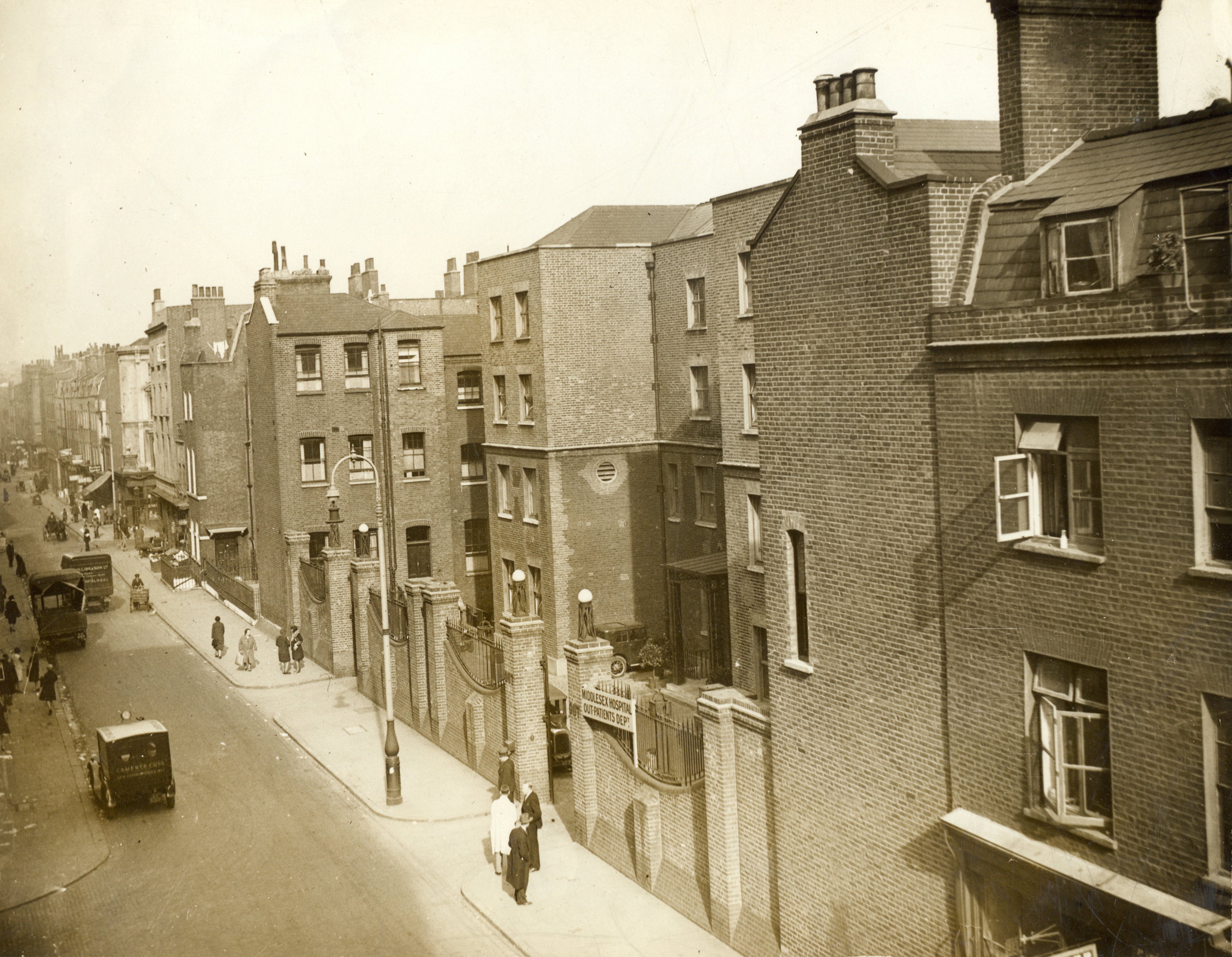Cleveland Street Workhouse
During the Industrial Revolution and adjacent periods, many people worked in factories, Charles Dickens included. Those who couldn’t find work or who were unable to work factory jobs due to illness or disability worked in workhouses. Although not mentioned explicitly in Dickens’s A Christmas Carol, one of the most famous workhouses in London was the Cleveland Street Workhouse, which is near Charles Dickens’ childhood home. The close proximity between these two sites have led some historians to believe that the Cleveland Street Workhouse may have been the inspiration for another one of Dickens’s most famous novels: Oliver Twist (Beete).
Many of the workhouses were established by the Poor Law Act of 1834 (sometimes called the ‘New’ Poor Law) to provide refuge for the sick and the poor. However, the system forced those seeking refuge into hard labor. Poor Law Unions, as mentioned in A Christmas Carol, were formed to keep people from going to the workhouses (Richardson). Many people felt that the workhouses were used to imprison the poor and punish poverty (“1864 Poor Law"). Understanding the nature of the workhouses that Scrooge speaks of in A Christmas Carol helps one to understand the context of Dickens’s writing and the overall message and social critique of the work.

Works Cited
Beete, Paulette. "Ten Things to Know about Charles Dickens' A Christmas Carol." National Endowment for the Arts, 4 Dec. 2020, www.arts.gov/stories/blog/2020/ten-things-know-about-charles-dickens-chr.... Accessed 30 Jan. 2023.
"1834 Poor Law." The National Archives, www.nationalarchives.gov.uk/education/resources/1834-poor-law/. Accessed 30 Jan. 2023.
Richardson, Ruth. "Oliver Twist and the Workhouse." British Library, 15 May 2014, www.bl.uk/romantics-and-victorians/articles/oliver-twist-and-the-workhouse. Accessed 30 Jan. 2023.
Parent Map
Coordinates
Longitude: -0.138315900000
